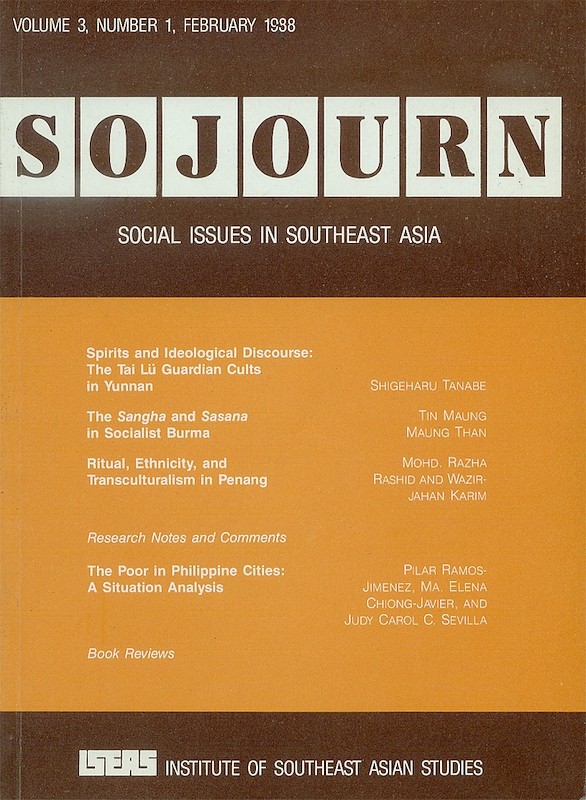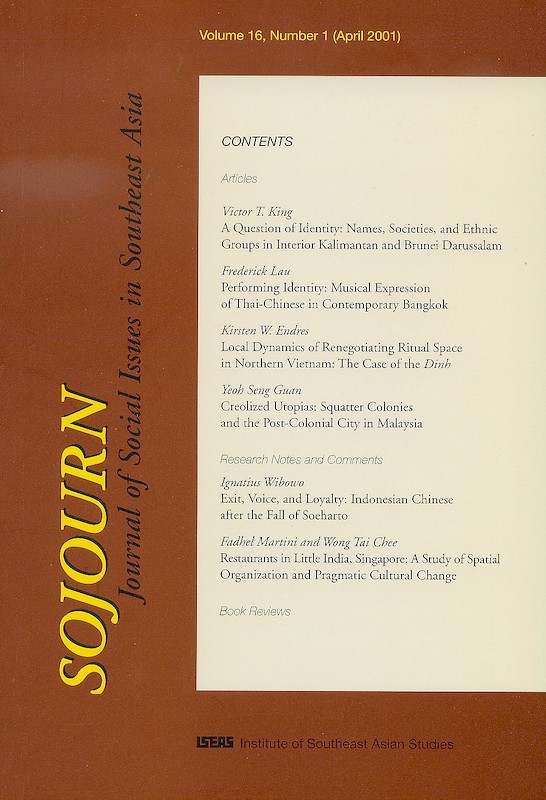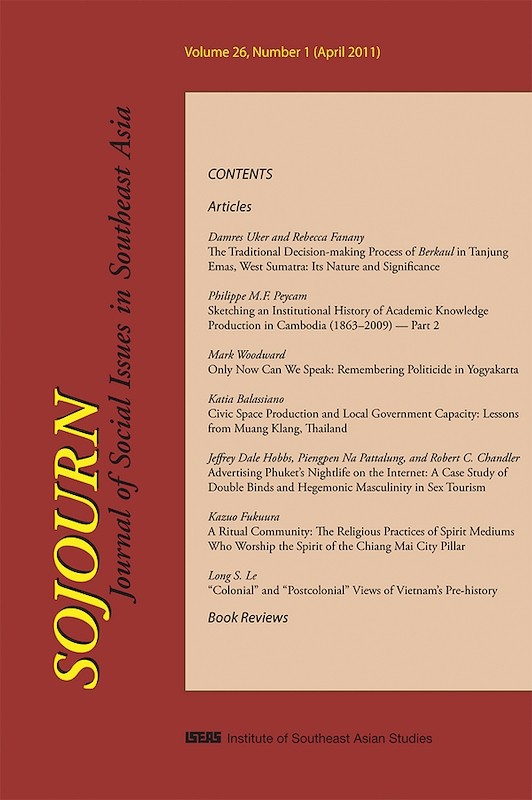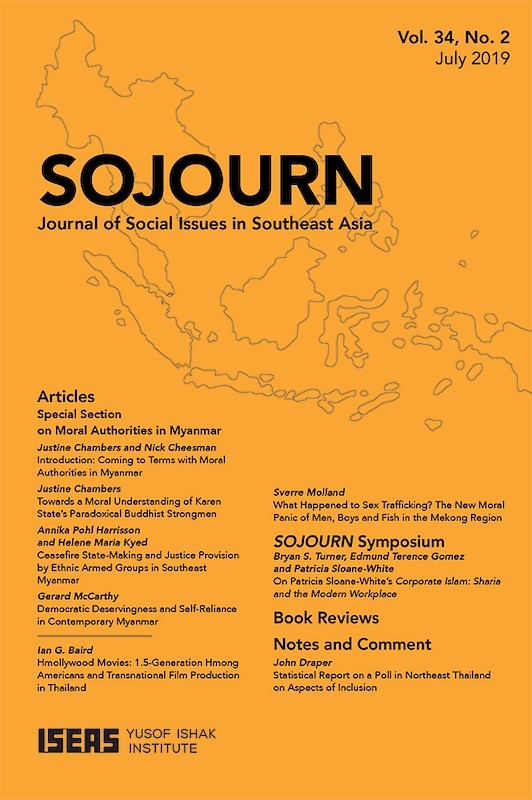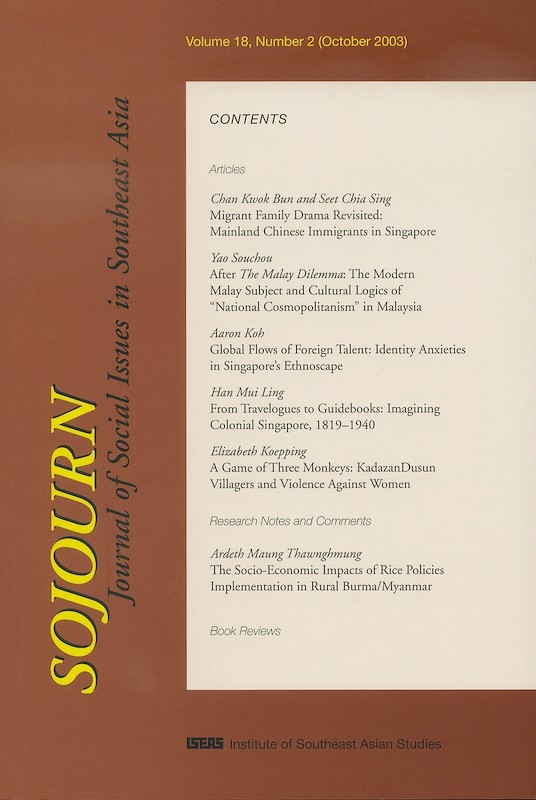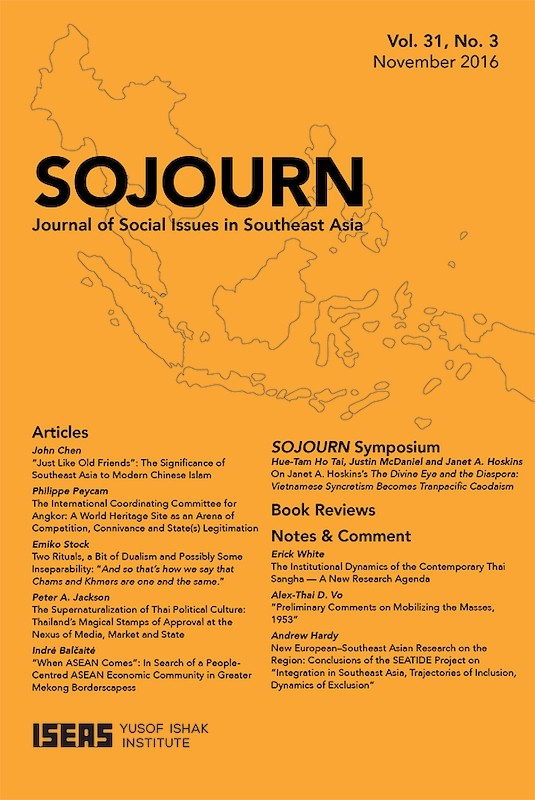SOJOURN: Journal of Social Issues in Southeast Asia Vol. 15/2 (Oct 2000)
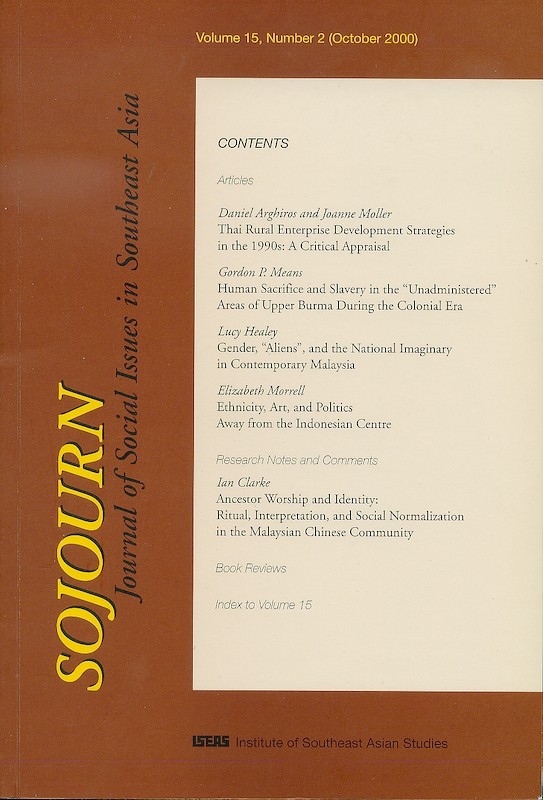
Date of publication:
October 2000
Publisher:
Institute of Southeast Asian Studies
Number of pages:
165
Code:
SJ15/2
Contents
-
Preliminary pages
- ARTICLES
-
Thai Rural Enterprise Development Strategies in the 1990s: A Critical Appraisal, by Joanne Moller, Daniel Arghiros, authors see abstractThis paper presents a critical appraisal of contemporary approaches to promoting small-scale, rural, non-farm production in Thailand. The state has introduced what are, for the Thai government, innovative new programmes. Non-governmental organizations, which have only recently accepted that promoting production for the market is a legitimate endeavour, now also have a range of programmes. However, differences in approach exist, and are embodied in debates about the operational definition of thurakit chumchon, community business, a term used to denote development programmes that promote economic growth with equity. Moreover, programmes and projects that seemed almost irrelevant during Thailand's boom years have suddenly been given a new lease of life as funds have been devoted to expanding them to create work for the ranks of the newly unemployed. Unfortunately, however, the majority of projects are still undermined by persistent misleading assumptions about the nature of rural society. This paper is based on field research in some nineteen provinces in the period leading up to and following Thailand's financial crisis.
-
Human Sacrifice and Slavery in the "Unadministered" Areas of Upper Burma During the Colonial Era, by Gordon P Means, author see abstractBefore 1930, large portions of Upper Burma were unadministered. Many societies in these areas practised slavery, while some also performed human sacrifice. With the formation of the League of Nations Slavery Commission, Britain was pressured to abolish slavery and human sacrifice throughout Burma. To comply, annual military expeditions were sent to Upper Burma for the liberation of slaves. Villages failing to abide by a proclamation abolishing human sacrifice were punished. After six years of operations all slaves were reportedly liberated, but new problems arose. To avoid further international scrutiny, the slave-liberation operations were kept under a veil of secrecy.
-
Gender, "Aliens", and the National Imaginary in Contemporary Malaysia, by Lucy Healey, author see abstractOver the last few decades, Malaysia has welcomed foreign workers into those sectors of the economy that have suffered chronic low-skilled and semi-skilled labour shortages. Coming from Malaysia's poorer neighbours (particularly Indonesia, Bangladesh, and the Philippines), these migrants occupy an ambivalent place in Malaysia's national development. This paper argues that not only is contemporary Malaysia re-fashioning its national identity in response to new outsiders, who are deemed the new undesirable aliens, as argued by others recently, but this reconstituted national imaginary is profoundly ethno-nationalist, class-based, sexualized, and gendered.
-
Ethnicity, Art, and Politics Away from the Indonesian Centre, by Elizabeth Morrell, author see abstractIn the present climate of instability, concern about social conflict and violence is being expressed by Indonesians in many different ways. Visual and performance artists have been prominent in articulating community anxiety. This paper discusses the complexities which surrounded a performance art installation mounted in the rural highlands of South Sulawesi by a visiting urban artist in the immediate post-Soeharto period. The participants in the endeavour the artist, the local bureaucracy which supported the work, and the audience placed differing roles, interpretations, and values upon the installation. These varied responses parallel some of the issues which must be considered in Indonesian reform.
- RESEARCH NOTES AND COMMENTS
-
Ancestor Worship and Identity: Ritual, Interpretation, and Social Normalization in the Malaysian Chinese Community, by Ian Clarke, author see abstractThis paper examines the role played by the practice of ancestor worship in Malaysian Chinese culture. Approaching this practice from the point of view of the unique nature of ritual in Chinese culture, the paper looks at how this practice is interpreted by various individuals and institutions within Malaysian Chinese society to make it compatible with their own separate ideological systems. Further it demonstrates that common participation in this ritual activity at one level acts as a form of social normalization among diverse social groupings, helping to create and express a Chinese ethnic identity within Malaysian society.
-
BOOK REVIEW: Confucianism and Human Rights. Edited by Wm. Theodore de Bary and Tu Weiming, by Chong Kim Chong, author
-
BOOK REVIEW: The Legend of the Golden Boat: Regulation, Trade, and Traders in the Borderlands of Laos, China, Thailand and Burma. By Andrew Walker, by Alexandra Denes, author
-
BOOK REVIEW: Pierced by Murugans Lance: Ritual, Power and Moral Redemption among Malaysian Hindus. By Elizabeth Fuller Collins, by Vineeta Sinha, author
-
BOOK REVIEW: Ban Amphawan et Ban Han. Le devenir de deux villages rizicoles du Nord-Est thailandais. Edited by Bernard Formoso, by Jean Michaud, author
-
Index to Volume 15

